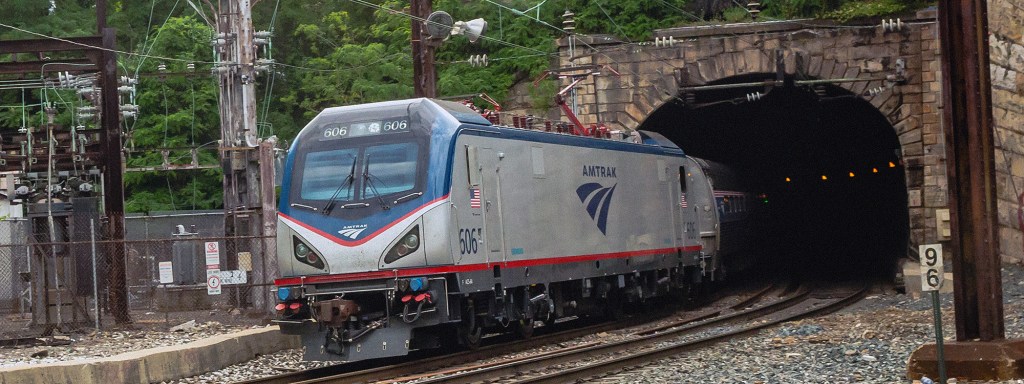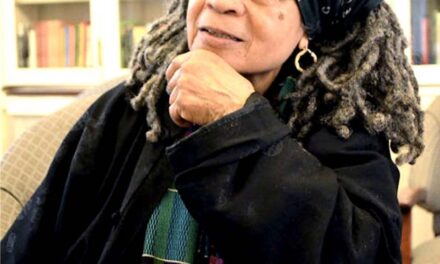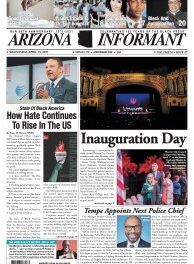
By Megan Sayles
AFRO Business Writer
msayles@afro.com
Amtrak’s multibillion Frederick Douglass Tunnel Program is in progress. The major infrastructure project intends to modernize a 10-mile section of the bustling Northeast Corridor and eliminate a rail bottleneck between D.C. and New Jersey.
The cornerstone of the development is the replacement of the aging Baltimore and Potomac (B&P) Tunnel, which was built in 1873. The new tunnel is named for the Maryland-born abolitionist who became known around the world for his speeches and writings about his time in bondage and the vile institution of chattel slavery.
Residents from predominantly Black neighborhoods along the construction path have some concerns about the project’s impacts on their homes, health and safety.
“There are all different kinds of issues. We have property rights issues both above and underneath the ground,” said Amy Petkovsek, executive director for the Community Law Center (CLC). “We have environmental issues now during construction with people who can’t breathe and concerns for after these tunnels are built with the ventilation facilities being next to schools.”
CLC is representing 10 community groups from historic West Baltimore neighborhoods, including Edmondson, Matthew Henson, Reservoir Hill and Sandtown. Petkovsek is acting as lead counsel.
The West Baltimore communities have historically been damaged by past urban renewal policies and infrastructure projects, like the Highway to Nowhere, that have severed them from vital resources and services.
As the Frederick Douglass Tunnel project is funded by the federal government, Amtrak must meet certain community engagement requirements. But, Petkovsek said the meetings have been “horrific.” She maintained that the national rail service has been demeaning to residents in conversations.
“Before CLC got involved, they were telling every neighborhood association something different, which has been done here and other places historically,” said Petkovsek. “It’s really unhelpful. By having group representation we can speak with one voice.”
In February, Amtrak announced that initial demolition had started, which included the razing of 47 residential and commercial properties in Baltimore. The company said it planned to begin large-scale construction in the summer timeframe.

“Major construction is slated to begin later this year, including utility relocations and work for the first of five bridges,” said Amtrak on its website. “Throughout tunnel construction, Amtrak will continue to keep the community informed and updated, perform real-time monitoring and undertake other industry-leading activities to protect adjacent properties.”
The AFRO reached out to Amtrak for comment but did not hear back.
Marvin “Doc” Cheatham, president of the Matthew Henson Neighborhood Association, said he believes the Amtrak project is one of the most threatening issues he’s encountered after living in Baltimore for more than 70 years. Rail will travel under several of the neighborhood’s blocks.
“I’m really frightened by this because our houses are over 100 years old,”said Cheatham.
He alleged that Amtrak has approached older residents and offered $7,000 in compensation if the project destroys their homes.
“We’re fearful because very few of us own our houses, and they’re making offers if something were to happen,” said Cheatham. “It’s a ridiculous fee that can’t cover anything.”
He’s particularly concerned about blocks on Monroe Street, McKean Avenue, Presbury Street and Fulton Avenue. Digging started on Monroe Street about a month and a half ago, according to Cheatham, but he said the community was not notified before it began.
“What we’re saying is we want to be given all of the information that we can,” said Cheatham.
The Reservoir Hill Association has also been outspoken about its reservations over the construction project. In April, the community group filed a civil rights complaint to the U.S. Department of Transportation, alleging that it would have inequitable impact on their neighborhood.
The complaint contends that Amtrak could have reached its objectives for the project through alternatives that are less discriminatory to Black residents. It cites documented information from the Federal Railroad Administration that acknowledged the selected route would have disproportionately high and adverse effects on minority and low-income communities.
A major element of their concern is the construction and operation of a ventilation facility directly across from Dorothy I. Height Elementary School, the neighborhood’s sole 21st Century School.
“It serves pre-kindergartners,” said Carson Ward, B&P Working Group chair for the Reservoir Hill Association. “Think about how susceptible their little, young lungs would be to an incident of emergency. There’s also questions about non-emergent ventilation.”
According to the Baltimore City Health Department,13.7 percent of Baltimore adults have asthma, compared to 9 percent across the state of Maryland. For high school students, this number jumps to 33.3 percent, compared to 25.9 percent statewide.
The Reservoir Hill community worries the ventilation facility, which could give off pollutants, may exacerbate these conditions. In their complaint, the group requested that DOT open a Title VI investigation into the effects of the Frederick Douglass Tunnel Program on Black residents, during which construction of the tunnel and ventilation facility would be put on pause.
“Our foundational concern was that the decision to choose the specific alignment and manner in which they are rebuilding the B&P Tunnel was not done through scientific measurement,” said Keondra Prier, president of the Reservoir Hill Association. “They didn’t sit down and say this is the best way to go about repairing this tunnel that will have the least impact on people and fulfill the goals of Amtrak.”
The post Amtrak’s Frederick Douglass Tunnel Program raises concern from West Baltimore residents appeared first on AFRO American Newspapers.











